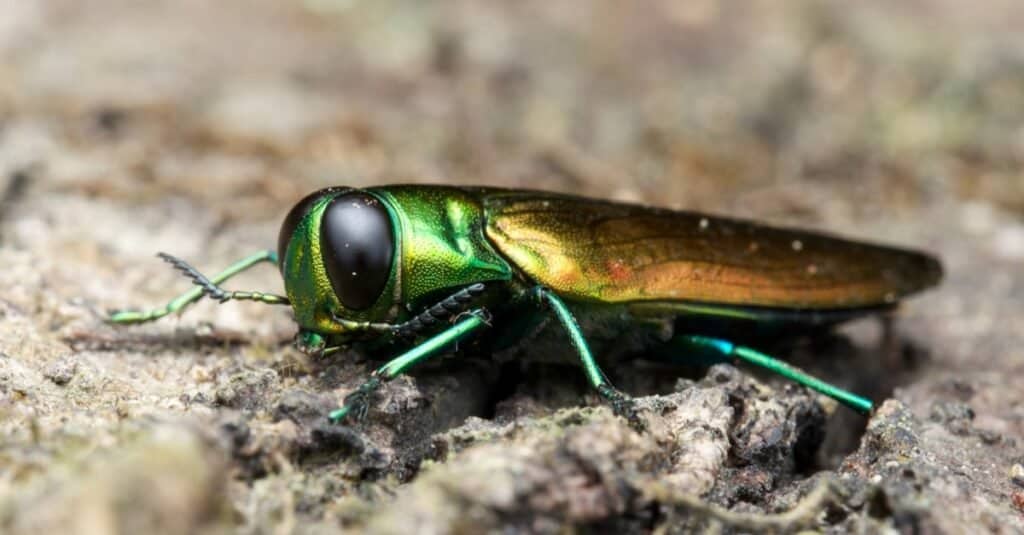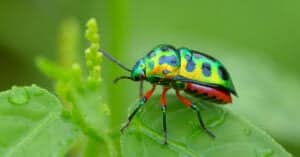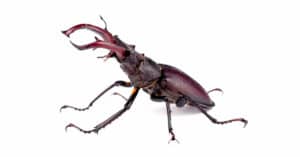Have you heard about the Emerald Ash Borers (EAB)? You might have heard about it on the news, and the chaos they have been creating in fields. Emerald Ash Borers are small beetles whose victims are ash trees. Luckily, they aren’t a harm to humans.
Before we dive into the dangers this beetle inflicts, let’s first see how you can identify an emerald beetle. Read more to learn about emerald ash borers and important information on how to limit an EAB attack.
What Are Emerald Ash Borers? How Do You Identify Them?
Emerald Ash Borers, scientifically known as Agrilus planipennis, is a type of wood-boring beetles that were first discovered in 2002 in Detroit. Adults can fly, but in its spread from one continent to another, humans have been the reason. Although they are native to Asia, they have recently been found in over 30 states of the United States and parts of Canada.
To identify an Emerald Ash Borer, you need to know that they have different physical characteristics as an adult and as a larva. So, these are the ways you can identify an EAB.
Larva
- Its body is about an inch or a quarter of an inch in size.
- It does not have any legs but has a long, slender body.
- They have a small brown heads.
- segmented body in bell-shaped segments.
- Brown pincer-like appendages on their last segment.
Adult
- One-third of an inch to half of an inch in body size.
- It has a wide mouth but the body is more narrow than the head.
- You can spot it in a vibrant, emerald, copper-green color.
- They have hard wings shaped like shells for protection.
- There is a copper-colored spot just near the head.

The Emerald Ash Borer, a type of beetle, kills ash trees by destroying the water and nutrient conducting tissues under the tree’s bark.
©Herman Wong HM/Shutterstock.com
How Destructive is the Emerald Ash Borer?
An estimate shows that 100 million ash trees from Massachusetts to Colorado have been destroyed by the Emerald Ash Borer. Moreover, there are more than 8 billion trees at risk, according to National inventory data.
But that is not all. It is scary enough that the EAB has somehow spread to 30 states since being discovered in 2002. Now, it is believed that the Emerald Ash Borer is also attacking the White Fringetree, a relative of the ash tree.
The borers settle at the top of ash trees and work their way down, eventually laying eggs beneath the bark. The larvae hatch and eat their way under the bark to feed on the phloem that circulates nutrients up the trunk. Three or four years can pass before their impact is noticeable.
The reason that these beetles caused more trouble in the United States than in Asia is because of the environment. In Asia, there are a number of predators of an EAB in the forest that help balance the population of the Emerald Ash Borer. Moreover, its main habitat in Asia is in forests where, if a tree dies, it decomposes and doesn’t pose any real threats.
In the USA, however, the case is not the same. The ash trees are largely on public property, such as in parks. The Ash tree does not decompose nearly as quickly when it dies. This poses a threat to both people and property as the branches slowly start to fall off and then the tree eventually topples over. Some towns have even had to close their parks to make sure their residents are safe. Because of this the costs are higher to remove it from the ground. If a tree is attacked by an EAB, it needs to be taken down and chopped up.
How Does an Emerald Ash Borer Attack the Ash Trees?
The Emerald Ash Borer is quite the chaotic predator of the Ash tree.
They start the damage off as larvae when they eat into the bark of the tree. This leads to a deep burrow or a hole in the tree; As the name suggests, they are wood borers.
They do the burrowing to protect themselves from the cold weather by hiding deep into the nook of the trees. But along with this burrowing, the larvae eat the tissue of the tree. The tree is then deprived of its nutrients and main water supply, causing the tree to starve to death.
This continues until the larva becomes an adult, which then lays eggs, and the tree is left host to new larvae.
Since the EAB is a beetle, it can lay up to 100 eggs in one reproductive cycle.
As a result, it can take as little as two to four years for the EAB to kill the whole ash tree. But, the problem is that it can take three to four years for the tree to become noticeable as a victim of an EAB.
Signs of an EAB Attack
- There are D-shaped exit holes in the trunk of the tree.
- The holes may be round or oval and have a width of approximately 1/8 of an inch.
- Beneath the bark, you can spot S-shaped tunnels referred to as serpentine galleries.
- A group of larvae, adults, and eggs may also be seen crawling in the trunk of the trees.
There are also some general signs that might be present because of an EAB infestation. They include:
- The upper canopy of the tree may be thinning.
- Branches may die over the time of the attack.
- The tree trunk may have splits in its bark.
- Under stress, trees may sprout new branches and leaves at their base called suckering. This may or may not be present due to an EAB attack.
- There may be woodpecker damage as woodpeckers tend to attack trees that have insects.
How to Treat Trees From an EAB Infestation
If you spot an infestation early, then you might have a chance to save the tree.
Otherwise, it might be too late to save it from dying. In that case, you will need to chop it up to kill it entirely. Here are a few ways you can try saving the Ash tree from an Emerald Ash Borer attack.
- Don’t move the dead wood around in vehicles as an EAB spread is both rapid and lethal to other trees that get infested.
- Use chemical insecticides of good quality but they may be expensive to use on a large scale.
- Cold temperatures can affect the beetle but it is not known to kill them as they have anti-freezing agents that can protect them in cold weather, but a small percentage may die.
Conclusion
Emerald Ash borers can be extreme pests. Now that you have an idea of what to look out for you can be prepared if you ever run into these tiny monsters.
Up Next…
Check out some of our other article related to pests.
- Types Of Beetles – Read this article to get a complete list of different types of beetles.
- How To Get Rid Of Emerald Ash Borers – Check out this complete guide on getting rid of these pests.
- Invasive Species In the US – Have a look at our comprehensive list of invasive species in the US.
The photo featured at the top of this post is © Herman Wong HM/Shutterstock.com
Sources
- Entomology Today, Available here: https://entomologytoday.org/2014/10/10/emerald-ash-borer-may-have-spread-to-different-tree/
- Westchester Tree Life, Available here: https://westchestertreelife.com/2015/01/emerald-ash-borer/
- USDA, Available here: https://www.aphis.usda.gov/aphis/resources/pests-diseases/hungry-pests/the-threat/emerald-ash-borer/emerald-ash-borer-beetle
- American Forests, Available here: https://www.americanforests.org/magazine/article/will-we-kiss-our-ash-goodbye/
FAQs (Frequently Asked Questions)
What is the best treatment for emerald ash borer?
How did emerald ash borer get to Canada?
Emerald Ash Borer was first discovered in North America in 2002. It is thought to have been shipped to Canada in untreated wooden packaging materials. The range of Emerald Ash Borer in Ontario is rapidly expanding through the movement of infested materials.
Can I save my tree from the emerald ash borer?
Can ash trees be saved from emerald ash borer? In many cases, yes. Ash conservation efforts are stronger than ever, and treatment options are available to protect trees. In fact, when applied correctly, EAB treatment is 85 to 95 percent effective
Thank you for reading! Have some feedback for us? Contact the AZ Animals editorial team.






